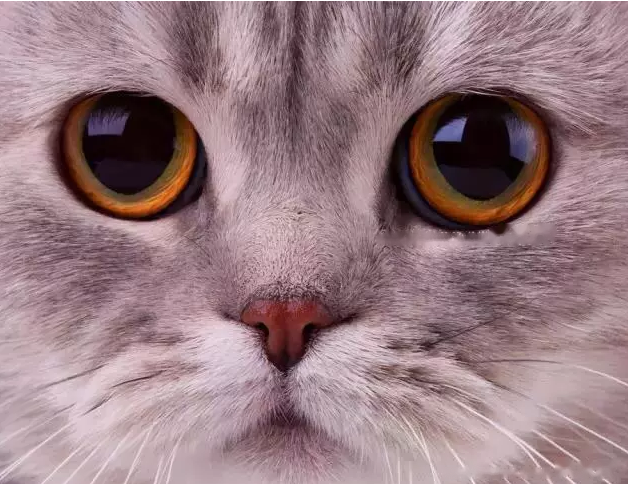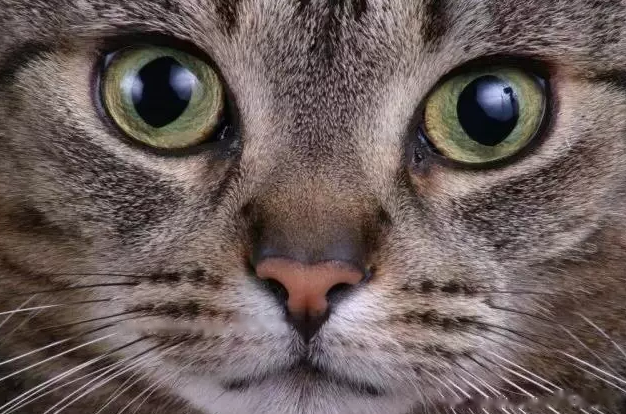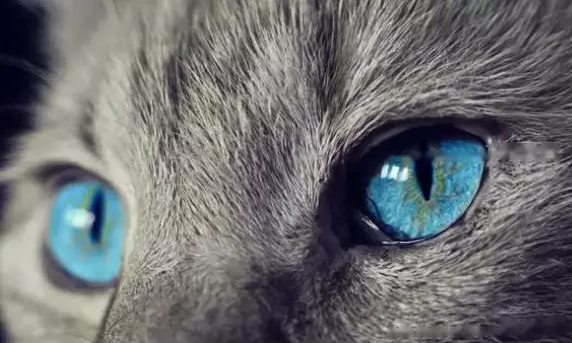I don't know if you have heard the rumor that cute cats are colorblind. In fact, this is basically true. The world in the eyes of cats is different from the world in the eyes of humans.
The cat can't distinguish the colorful colors like us, so even if you dress up and stand in front of it, it doesn't feel different from those coquettish bitches, just different degrees of black, white and gray.

There was a time when cats were thought to be colorblind and could only see shades of black, gray and white, with different colors in The cat's eyes are different shades of black and white.
However, current scientific research proves that this view cannot be established. Because experiments have shown that cats can distinguish colors after being trained to distinguish them. Many scientists believe that cats don't care about color, and although it can see it, it doesn't give it any meaning. Binocular vision is very important for hunting animals like cats.
Because it must be able to accurately judge the mileage in order to calculate the distance to the hunting target. When the visual fields of the two eyes of an animal overlap, a stereoscopic effect can be produced. The larger the overlapping range, the stronger and more accurate the stereoscopic effect will be. The ability of cats to judge distance is not quite as accurate as that of humans, but it is better than that of dogs. The overlapping field of view of the human eye is much larger than that of the cat's eye, while that of the dog's eye is smaller than that of the cat's eye.

Cats don't recognize many colors
The color vision of cats is often known by people Ignore them, thinking they live in a black and white world. It is true that cats cannot distinguish rich colors like humans can - the human retina has three cones of red, green and blue, and it is these basic tricolor visual cells that give animals the ability to perceive the color world. However, the cat's vision There are only two types of cone cells, green and blue. In this way, cats can only distinguish limited colors, such as gray and green, blue, yellow. You know, most mammals have only two types of cone cells, and the world is basically black and white in their eyes.
Powerful night vision
The cat's color sense is sacrificed for its super powerful night vision. In the dark, the cone cells begin to strike. At this time, the rod cells in the retina come into play. These cells cannot perceive color, so in the dark, everything we see is black and white. Cats have a rod:cone ratio of 25:1, compared to 4:1 in humans, so when switching to night, the cat becomes more sensitive than humans, and its pupils dilate to the surface of the eyeball in the dark 90% of the light, the faint light is enough for them to hunt for prey. Comes and goes freely in dark environments.

Although the cat's color discrimination ability is very poor, it does not affect its predation and life. Their vision in dimly lit conditions is much more sensitive than that of humans. Cats only need one-sixth of the light received by the human eye to capture movement and shape details with the same precision as humans, and are well adapted to hunting at night.
Cats rarely need to use the ability to distinguish colors, so you don't have to worry about cats' color blindness. Be with them.
![[Dog Training 5] The training method of pet dog dining etiquette](/static/img/12192/12192_1.jpg)






